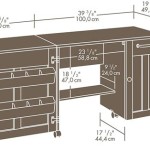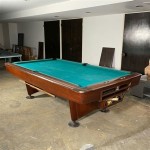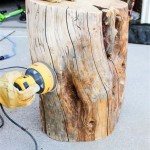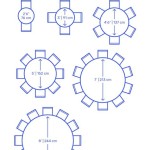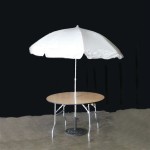The Enduring Value of Antique Drop Leaf Tables and Chairs
Antique drop leaf tables and chairs represent more than just furniture; they are tangible links to the past, embodying craftsmanship, history, and aesthetic appeal. Their value, however, is multifaceted, encompassing not only monetary worth but also historical significance and functional utility. Understanding the factors that contribute to the value of these pieces is crucial for both collectors and those simply appreciating fine furniture.
The enduring popularity of drop leaf tables and chairs stems from their adaptability and space-saving design. Originating in the early to mid-17th century, these pieces were particularly well-suited to homes with limited space. The hinged leaves that drop down to conserve space, and the often-matching chairs designed for comfort and style, have ensured their continued relevance across centuries. However, determining the specific value requires careful consideration of several key factors.
Key Factors Affecting the Monetary Value
Several elements significantly influence the market price of antique drop leaf tables and chairs. These encompass provenance, condition, rarity, materials, and craftsmanship. Each factor plays a critical role in determining whether a piece is considered a valuable artifact or simply a functional antique.
Provenance: The documented history of ownership, or provenance, can substantially inflate the value. If an item can be traced back to a notable historical figure, a prominent family, or a significant event, its desirability and price rise considerably. Documents such as original purchase receipts, letters discussing the furniture, or photographs showing the pieces in their original setting can provide invaluable authentication and enhance the piece's story.
Condition: The physical condition of the table and chairs is paramount. Pieces in excellent original condition, with minimal wear and tear, typically command higher prices. Significant damage, such as deep scratches, water stains, missing parts (especially original hardware), or extensive repairs, can drastically reduce the value. While some restoration is acceptable and even necessary for preservation, extensive or poorly executed repairs can detract from the authenticity and integrity of the piece.
Rarity: Scarcity is a fundamental driver of value in the antiques market. Pieces that are exceptionally rare due to limited production runs, unique design features, or unusual materials are highly sought after. For example, a drop leaf table crafted by a renowned cabinetmaker with a limited production window, or a set of chairs featuring an intricate, no-longer-practiced form of carving, will likely be more valuable than a mass-produced piece from a more common period or manufacturer. Identifying the rarity of a piece often requires expert knowledge and research.
Materials: The materials used in the construction of antique drop leaf tables and chairs significantly impact their value. High-quality hardwoods such as mahogany, walnut, rosewood, and cherry are generally more desirable than softer woods like pine or poplar. Exotic veneers, inlays, and ornamentation, such as mother-of-pearl or brass, can also increase the value, reflecting the skill and artistry of the craftsperson. The type of wood used can often help to determine the age and origin of the piece as well.
Craftsmanship: The quality of the craftsmanship is a crucial indicator of value. Hand-crafted pieces with intricate details, precise joinery, and a high level of finish are generally worth more than mass-produced items. Look for evidence of hand-tooling, such as chisel marks or uneven surfaces, which indicate a higher level of skill and artistry. The level of detail in the carving, inlay, or marquetry can also be indicative of the quality of the craftsmanship. Signed pieces by known cabinetmakers or workshops will always command a premium.
Historical and Design Significance
Beyond monetary considerations, antique drop leaf tables and chairs possess significant historical and design value. They offer insights into the social customs, economic conditions, and aesthetic preferences of past eras. Analyzing the design elements, construction techniques, and materials used can reveal valuable information about the historical context in which these pieces were created.
The design styles of these pieces often reflect the prevailing aesthetic trends of their time. For example, a drop leaf table from the Queen Anne period (early 18th century) might feature cabriole legs, pad feet, and elegantly curved lines, reflecting the emphasis on grace and refinement characteristic of that era. Similarly, a drop leaf table from the Federal period (late 18th and early 19th centuries) might exhibit more neoclassical influences, with straight lines, tapered legs, and decorative inlays inspired by ancient Greek and Roman motifs.
The construction techniques employed in antique drop leaf tables and chairs also provide valuable insights into the craftsmanship of the past. Before the advent of mass production, furniture was typically made by hand using traditional woodworking methods. Examining the joinery, such as dovetail joints, mortise-and-tenon joints, and pegged construction, can reveal the skill and expertise of the cabinetmaker. The use of hand-cut veneers and intricate carving also demonstrates a level of artistry that is rarely seen in modern furniture.
Moreover, considering the historical usage and social context of these pieces adds another layer of appreciation. Drop leaf tables were particularly well-suited to smaller homes, where space was at a premium. Their versatility allowed them to be used for a variety of purposes, from dining and writing to gaming and sewing. Owning such a piece allows a connection to the daily lives of people from past generations.
The Utility and Aesthetic Appeal in Modern Homes
While antique drop leaf tables and chairs possess historical and monetary value, they also offer practical benefits and aesthetic appeal in contemporary homes. Their space-saving design makes them ideal for smaller apartments or homes, while their timeless elegance can enhance the décor of any room.
The adaptability of drop leaf tables is a significant advantage in modern living. When space is limited, the leaves can be folded down to create a smaller footprint, making them perfect for apartments, condominiums, or dining nooks. When more space is needed, the leaves can be easily raised to accommodate guests or larger gatherings. This versatility allows them to function as both a small side table and a full-sized dining table, depending on the occasion.
Furthermore, antique drop leaf tables and chairs often possess a unique charm and character that is difficult to replicate in modern furniture. The patina of age, the subtle imperfections, and the handcrafted details all contribute to their distinct aesthetic appeal. These pieces can add warmth, personality, and a sense of history to any room. Integrating them into a modern interior design scheme can create a striking contrast between old and new, adding visual interest and depth.
The durability of antique drop leaf tables and chairs is another compelling reason to consider investing in these pieces. Constructed from high-quality materials and built to last, they can withstand the rigors of daily use for generations. Unlike mass-produced furniture made from particleboard or composite materials, antique pieces are often made from solid hardwoods that are far more resistant to wear and tear. With proper care and maintenance, an antique drop leaf table and chairs can be enjoyed for many years to come.
Choosing to furnish a home with antiques is also a sustainable choice. By repurposing existing pieces, it reduces the demand for newly manufactured furniture, which can contribute to deforestation and other environmental problems. Antique furniture is often made from sustainably harvested materials and built to last, making it a more environmentally friendly option than disposable, mass-produced furniture.
Ultimately, the value of antique drop leaf tables and chairs extends far beyond their monetary worth. They represent a connection to the past, a celebration of craftsmanship, and a sustainable choice for the future. Appreciating their historical significance, design elements, and practical benefits can enrich our understanding of both the past and the present. Their enduring appeal lies in their ability to combine functionality, beauty, and historical significance in a way that few other pieces of furniture can match. The intrinsic and aesthetic value of these items are as important as the price one might get, and must be considered when assessing their real worth.

Antique Dropleaf Tables

Lot Petite Drop Leaf Walnut Table Crocker Chair Co

Duncan Phyfe Drop Leaf Table And Chairs For Top

Antique Oval Drop Leaf Table Chairs Of Oxford

Duncan Phyfe Drop Leaf Table 6 For On 1stdibs Antique Value

Antique Drop Leaf Table Jacobean Style

What S The Value Of A Henkel Harris Mahogany Drop Leaf Table

Oval Drop Leaf Dining Tables From 1 S

Antique Walnut Drop Leaf Sides Inlaid Accent Side Table

Antique Drop Leaf Table Jacobean Style
Related Posts


